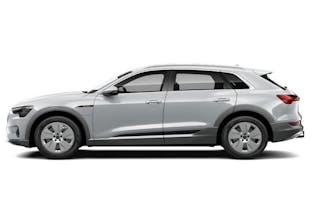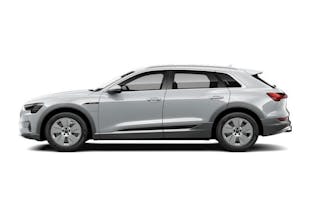Toyota RAV4 Limited Hybrid car review
One week living with the Toyota RAV4 Limited Hybrid.

The RAV4 doesn’t need much of an introduction. It’s a wildly popular vehicle that people are happily waiting more than a year to receive.
Toyota sells them new here in both regular and hybrid petrol engines. The Limited Hybrid model we were lent for the week costs $58,290 and also qualifies for a clean car rebate of $2387.

First impressions
The Limited is the highest-priced RAV4 you can also buy alongside the Adventure model, which costs the same. The differences between the two are mainly cosmetic. The only real difference is that the boot is smaller in the Limited due to it having a full-sized spare wheel. If a full-size spare is important to you, order the Limited.
The Hybrid has a 2.5L engine that’s capable of towing up to 1500kg. This is always something to check when lining up an EV, PHEV or hybrid, because some can’t tow much and some aren’t rated to tow at all.
Inside is space for five adults on partial leather seats, a big boot and a clean, clutter-free dash and centre console. It seems to have everything you need and nothing you don’t. It’s a medium-sized SUV that doesn’t take much climbing in and out of, as it’s not too high at all. Our test car came in graphite and in my opinion, it’s the nicest colour you can choose.
How we test
Each vehicle we trial gets the same treatment: a week of commuting in rush hour from Lower Hutt to Consumer HQ (a round trip of 28km); a run to the supermarket; and a drive over the Remutaka Hill and back, to see how it goes on a longer weekend trip. In total this makes for about 270km of motoring.
We record fuel use (both actual and on the trip computer) and measure electricity usage where appropriate, with PHEVs and EVs. The actual fuel use is measured by filling the tank to the brim at the start of the trial and then again at the end, and comparing numbers. It’s an inexact science that we use as a check, but it’s still a real-world appraisal – just one you take with a grain of salt.
Commuting

The RAV will run in EV mode, but only at speeds less than 30km/h, so it spends a decent portion of bumper-to-bumper crawling on the highway in this mode. As soon as you get above this, or really hoof it, the petrol motor kicks in.
The electric motor feels like a booster rather than an alternative mode of powering the vehicle, and Toyota doesn’t advertise it as anything more. Like all hybrids, the petrol motor turns off when you coast, to eke out as much range as possible.
That little bit of extra height from an SUV means you get a better view and you aren’t quite as blocked out by the utes and vans of this world. That’s nice for driving through town and when you are waiting at intersections.
Supermarket trip
It doesn’t feel small in the carpark, nor does it feel gargantuan. It’s easiest to manoeuvre into parks when you have the top-down camera activated, as you get a nice 360° view of your surroundings – that helps shrink the car and give you some confidence. It is activated when in reverse or when you press the camera view button next to the steering wheel.
The boot is really big and made my weekly shop look pitiful. The Limited has an automatic tailgate so you don’t have to tax your arms in lifting the boot, either.
Longer journey
The RAV is definitely at home on the highway and felt very flat through winding corners. Its handling is definitely sportier than it looks on the outside and it has enough power to overtake when you need to.
With the driver seat right back (and reclined to fit my lengthy limbs), there was still better space behind me than most vehicles. This would make it a good family tourer.
I’m in the top 1% for height, so I like to think that I really put vehicles to the comfort test. This thing was fine, but having driven a few models now, I’ve found that Toyotas in general don’t really suit my body. I can never get the seat quite low enough to the floor, so my right knee tends to ride against the door handle. It wasn’t so much of a problem in the Highlander because it has a comfortable, squishy door lining.
If you run into a similar problem, look for padded door linings to make things easier on your right knee. I can’t really fault Toyota for making a car for the people rather than for big galoots like me – if I wanted to run a business and make money, I’d do the same thing.
Final thoughts

It’s no secret that the RAV4 is a popular car in New Zealand. And it’s a hard car to fault; there’s a reason why it won plaudits from motoring publications in several countries.
It remains very popular globally with big pressure being put on the supply. At the time of writing, the Toyota website is only letting you register your interest for the hybrid version for vehicles in 2024. If you can wait that long, you’ll have yourself a very nice, refined and comfy ride that doesn’t use a lot of fuel and never needs plugging in.
Toyota claims 5.3L/100km for the hybrid. The trip computer said we got 6.2L/100km while our actual fuel usage suggested 5.9L/100km.
The vehicle was kindly lent to us by Toyota NZ.
We've tested 95 electric and hybrid cars.
Find the right one for you.
Audi

Audi

Audi

Member comments
Get access to comment